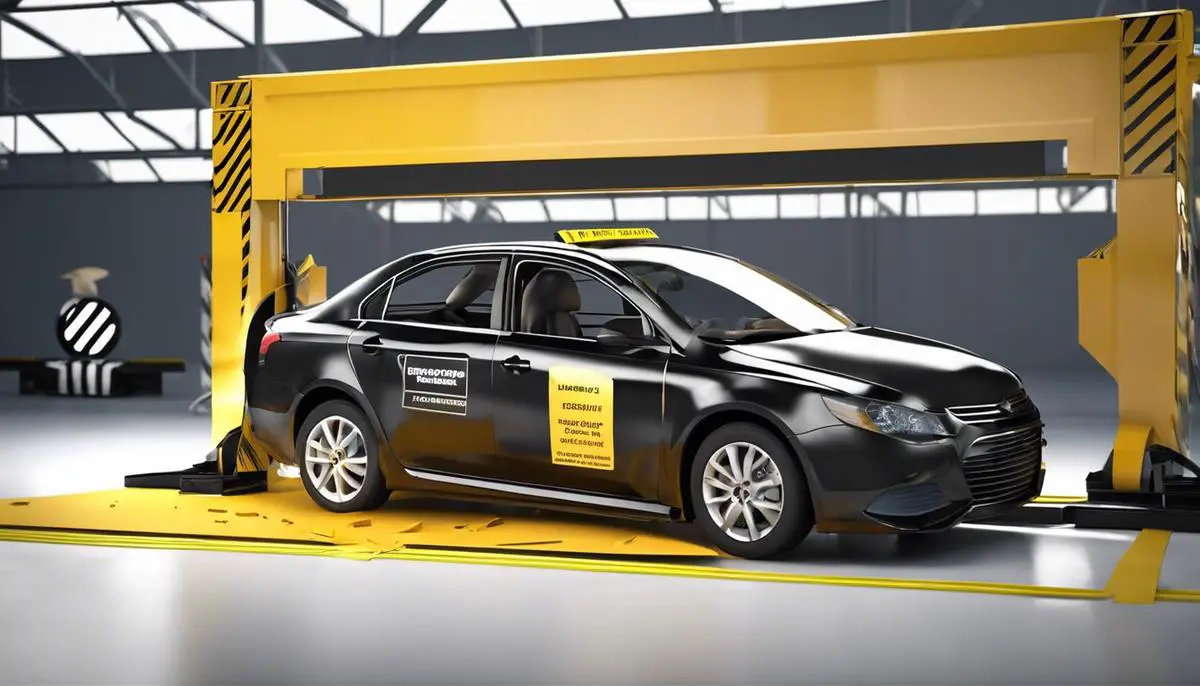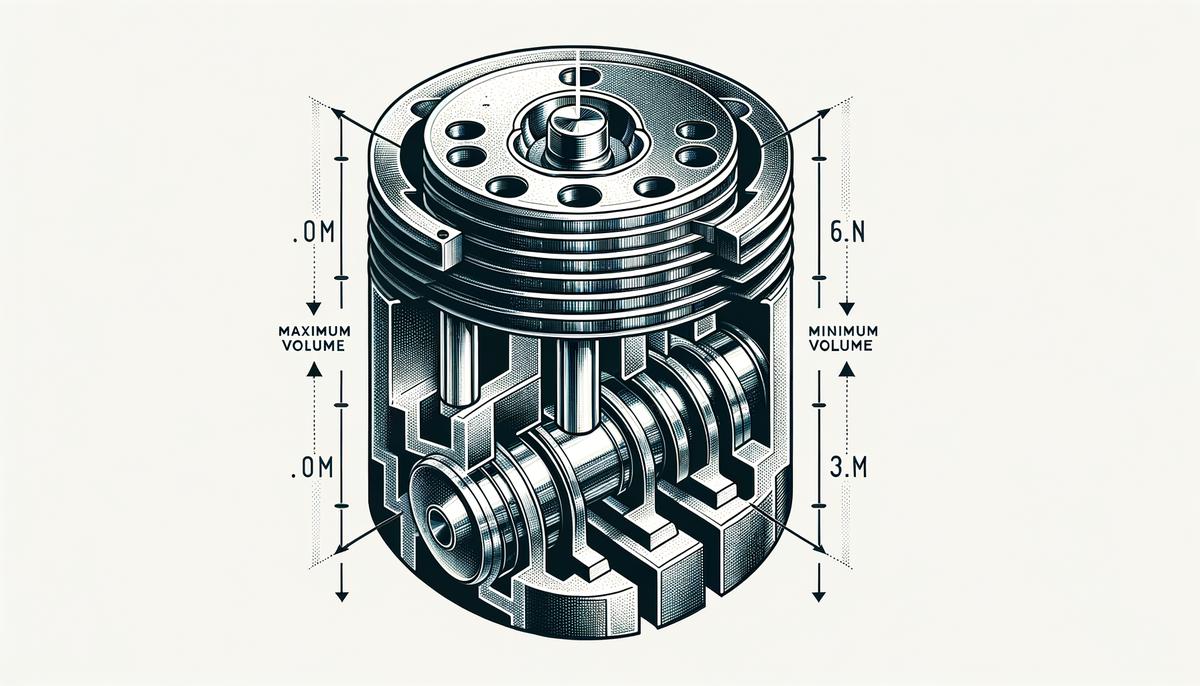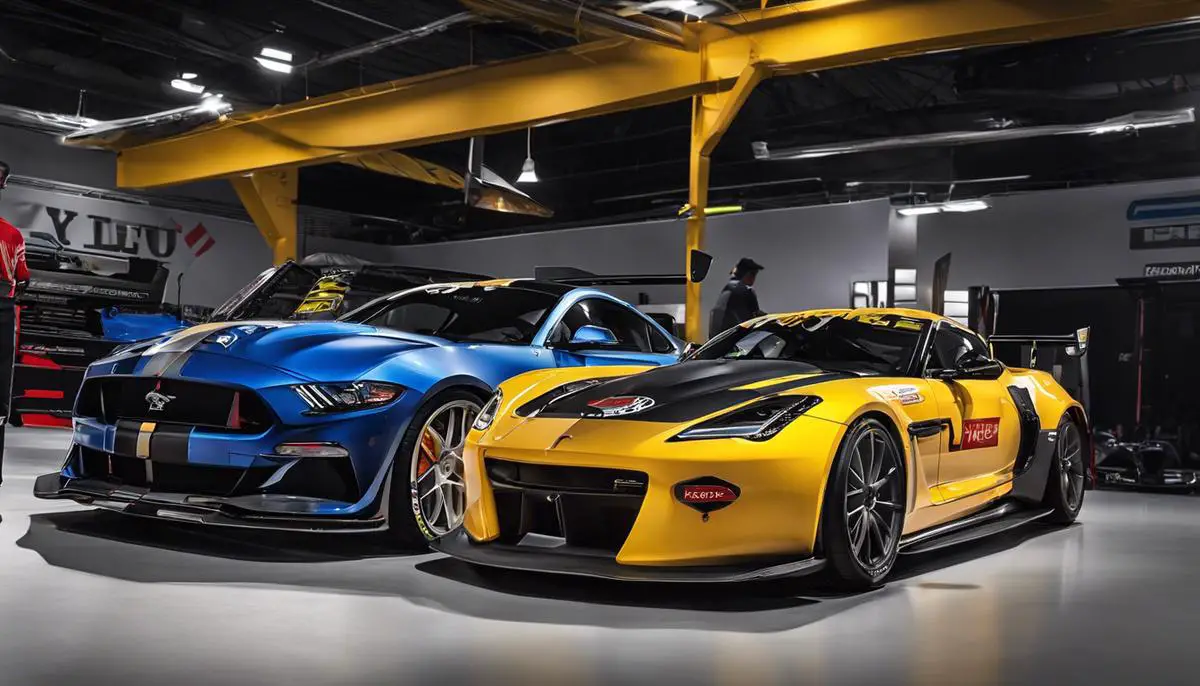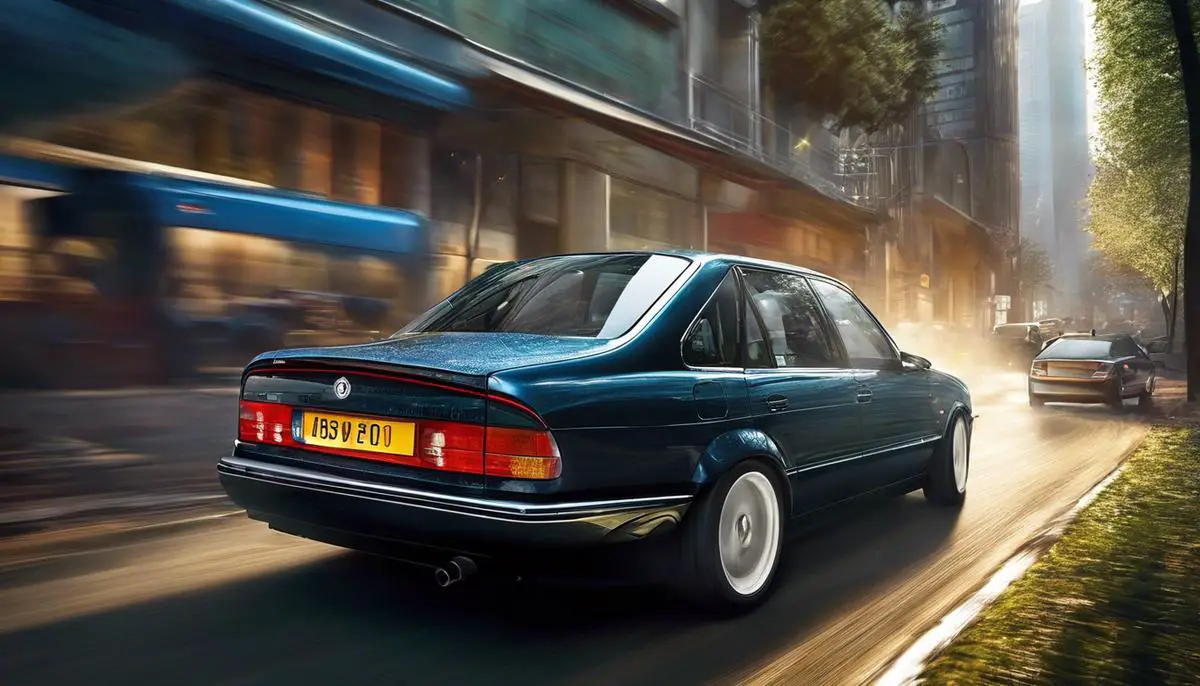Safety is a paramount concern for drivers and passengers alike, which makes understanding a car’s crash test rating an invaluable asset when considering a vehicle purchase. When we peel back the curtain on how these ratings are determined, a complex world of crash test procedures, rating systems, vehicle design dynamics, and the interplay of regulations and technology comes to light. From the force of impact in a frontal collision to the effectiveness of side airbags during a crash, every detail is meticulously evaluated to create a standardized measure of vehicle safety. As consumers embark on the quest to choose the safest possible mode of transportation, grasping the intricacies behind crash test ratings is a critical step toward making empowered and informed decisions.
Contents
Crash Test Procedures
Crashing Into Knowledge: Understanding Vehicle Safety Ratings
Buckle up, enthusiasts! Have you ever wondered how your car earns its stripes – or better yet, its stars – in safety? It’s not just about having advanced airbags or a sturdy frame; it all comes down to an intricate series of tests designed to ensure every trip is as secure as it can be. Here’s a quick dive into the intense world of vehicle safety testing to satisfy your curious minds.
Firstly, let’s talk about the pros behind the smash-ups – the safety organizations. In the United States, the two main players are the National Highway Traffic Safety Administration (NHTSA) and the Insurance Institute for Highway Safety (IIHS). Both of these organizations have their own test protocols and rating systems, but the mission is the same: keeping vehicle occupants safe.
The NHTSA uses a star rating system, where more stars mean safer cars. They conduct several crash tests including frontal, side, and rollover to measure the likelihood of serious injuries. Frontal crash tests simulate two vehicles of the same weight and speed colliding, while side crash tests replicate an intersection collision. Rollover resistance is assessed, not by actually flipping cars, but by applying a formula that considers a vehicle’s weight and center of gravity.
In parallel, we have the IIHS, known for its “Top Safety Pick” awards. This institute throws additional tests into the mix – such as the small-overlap frontal test, which replicates a vehicle hitting a pole or tree on the front corner. It also evaluates ease of use for LATCH systems (that’s the hardware for child-seat attachments), headlights for visibility, and even the effectiveness of crash avoidance features like automatic braking.
We mustn’t forget about crash test dummies – the unsung heroes of safety testing. Far from being just mannequins, these high-tech devices are fitted with sensors that measure forces experienced during collisions. The data recorded by these sensors are what ultimately tell us how a real human body would fare in a similar situation.
The crashes themselves are highly controlled events, taking place in specialized facilities. Vehicles are crashed at predetermined speeds, hitting barriers that accurately mimic real-life impacts. But it’s not all about the bashing and smashing; after the crash comes the analysis. Experts meticulously examine the wreckage for structural integrity, airbag deployment, and seatbelt effectiveness. High-speed cameras and sensors gather data that is later translated into safety ratings.
While the thought of crashing cars over and over might seem a bit destructive, it’s all for a monumental cause: keeping drivers, passengers, and even pedestrians out of harm’s way. This rigorous testing leads to improvements in vehicle design and innovations in safety features – ultimately guiding consumers toward the safest choices on the market.
Armed with this information, whether you’re a car-buying novice or a seasoned automotive aficionado, you’ll have a deeper appreciation for the stars and awards earned by vehicles. And remember, the vehicles might be the ones taking the hits, but it’s all about ensuring a smoother, safer ride for everyone. Keep this crash course in mind next time you’re in the market for a fortress on wheels!
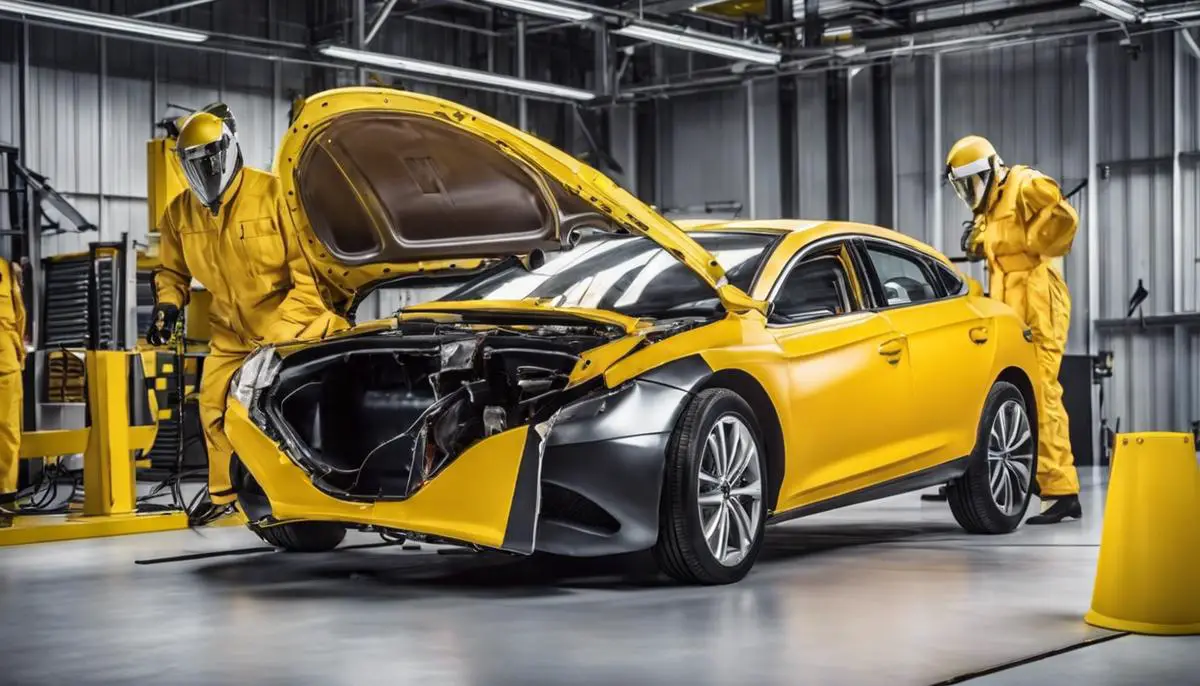
Rating Systems
When browsing vehicle safety ratings, it’s common to see stars—but what do they actually represent? Understanding crash test ratings, particularly the stars awarded by the National Highway Traffic Safety Administration (NHTSA), is crucial for making informed decisions about vehicle safety.
The NHTSA’s ratings range from one to five stars, with five stars denoting the highest level of safety. These ratings provide a clear, easily understandable way to gauge a vehicle’s crash protection and rollover safety relative to other vehicles.
One-star ratings suggest a much higher risk of injury in a serious crash compared to vehicles with higher ratings. Meanwhile, a five-star rating indicates a significantly lower risk of injury. It’s imperative to note that these ratings are comparative within vehicle categories, meaning a compact car with a five-star rating is not necessarily as safe as a larger vehicle that has received the same rating.
Each star rating corresponds to a specific likelihood of injury:
- Five stars: 10% or less chance of serious injury
- Four stars: 11% to 20% chance of serious injury
- Three stars: 21% to 35% chance of serious injury
- Two stars: 36% to 45% chance of serious injury
- One star: Greater than 46% chance of serious injury
These probabilities are the result of several crash tests that simulate different accident scenarios, which include frontal, side, and rollover crashes. For example, if a vehicle excels in frontal and side crash tests but has a vulnerability in rollover resistance, this could affect its overall star rating.
The stars are based on a few critical data points from the crash tests:
- Injury metrics gathered from crash test dummies
- Vehicle structural integrity
- Restraint system effectiveness
Rollover ratings, on the other hand, are based on two factors: a static calculation of the vehicle’s rollover risk and a dynamic driving maneuver test that assesses the likelihood of rollover in a loss-of-control scenario.
The overall vehicle score is not just an average of these tests; it’s a weighted summary that takes into account the relative importance of different types of crashes. Frontal crashes, for example, account for a significant portion of passenger vehicle fatalities, which is reflected in how the overall score is calculated.
When picking a vehicle based on safety, look beyond the star rating to the specific crash test results. A detailed review of the score might reveal strengths and weaknesses that are pivotal to the decision-making process. For instance, if your area is prone to high-speed highway collisions, a strong performance in frontal crash tests should be a critical factor in your decision.
Armed with this knowledge of star ratings and what lies behind them, consumers have the power to select vehicles that best protect themselves and their families in the event of a crash. Remember that while safety ratings offer a metric for comparing vehicles, the most important thing is to practice safe driving habits on the road.
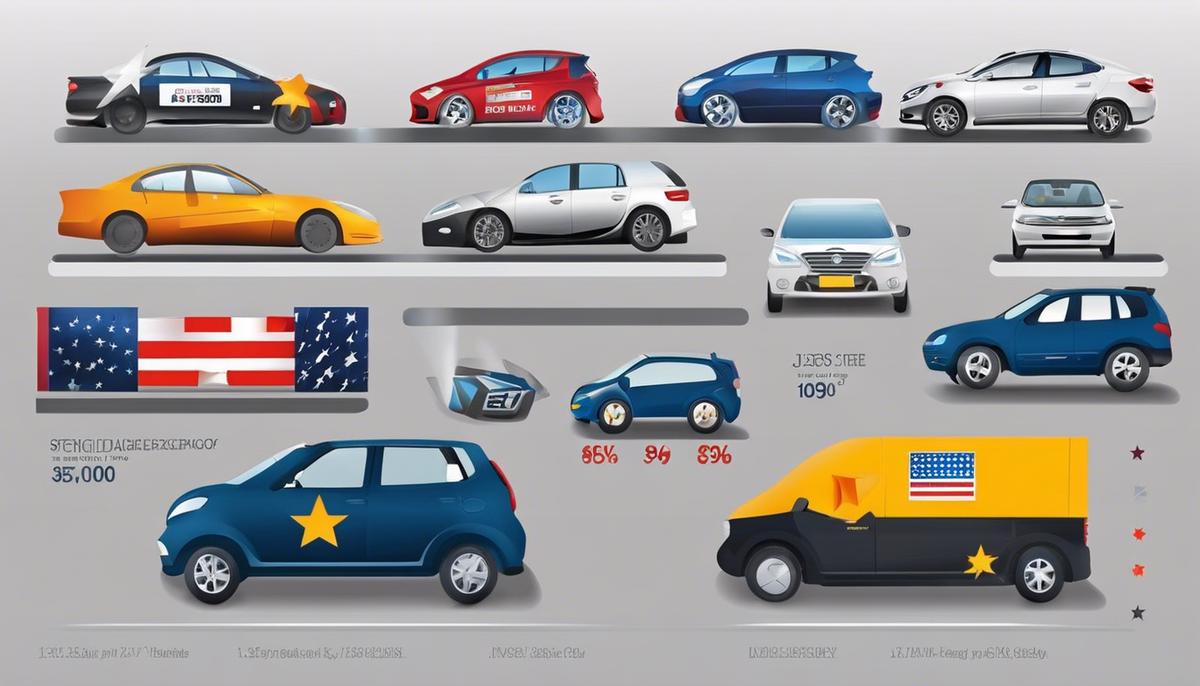
Vehicle Design and Safety Features
Now that you’ve got the basis of vehicle safety ratings and testing under your belt, let’s delve deeper into design aspects and safety features that have a direct impact on crash test outcomes. Recognizing these components can arm you with the knowledge to make informed decisions on your next vehicle purchase. Safety isn’t a luxury; it’s a necessity, and vehicle design plays a crucial role in ensuring it.
First up, body structure integrity. Engineer’s sweat over car frames and structures for good reason. High-strength steel, crumple zones, and reinforced safety cages are designed to absorb impact energy and distribute it away from the passenger compartment. Cars with rigid safety cells and crumple zones that deform properly tend to perform better in crash tests.
Next comes vehicle size and weight. It’s like the old adage: there’s safety in size. Larger, heavier vehicles generally offer more protection than smaller, lighter ones because they have more structure to absorb crash energy. That’s why you’ll often see a disparity in crash test results between different vehicle classes.
Now, airbags – they’re like your car’s own personal bodyguards. Frontal airbags are standard, but side, knee, and curtain airbags provide additional layers of safety. The location and timing of airbag deployment are critical factors in crash tests. Vehicles that have well-calibrated airbag systems that deploy promptly and cushion occupants effectively are often rated higher for safety.
Don’t overlook the humble seatbelt. Dynamic pretensioners and load limiters on seatbelts help tailor the force exerted on the passenger to minimize injury. Seatbelt design that ensures proper fit and encourages regular use is also a key determinant in safety ratings.
Electronic Stability Control (ESC) is a must-have for the safety-conscious. This tech helps prevent skids and loss of control, particularly in slick conditions or emergency maneuvers. ESC can significantly impact the outcome of avoidance tests, where the goal is to evade rather than endure a crash.
Automatic Emergency Braking (AEB) is the newer kid on the block, but already making waves in the safety world. AEB systems that detect impending collisions and apply brakes autonomously can reduce the severity of impacts or avoid them altogether. Vehicles equipped with reliable AEB generally score high marks in crash avoidance evaluations.
Active and passive safety features such as lane departure warnings, blind-spot detection, and active head restraints contribute to the dynamic safety profile of modern vehicles. The effectiveness and sensitivity of these systems can influence test outcomes positively when they help avoid crashes or reduce their severity.
Lastly, remember that technology is constantly evolving. Innovations like pedestrian automatic emergency braking and advanced driver-assistance systems (ADAS) are becoming more prevalent. As testing methodologies are updated to incorporate these systems, expect an impact on crash test outcomes.
In summary, understanding the intricate dance between vehicle design, safety features, and crash test outcomes equips buyers with the power to choose a chariot worthy of carrying their most precious cargo – themselves and their loved ones. Whether you’re a gearhead or a casual driver, let safety lead your decision-making. After all, a well-informed choice today might just save a life tomorrow. Now, go forth, stay safe, and let the rubber meet the road with confidence.
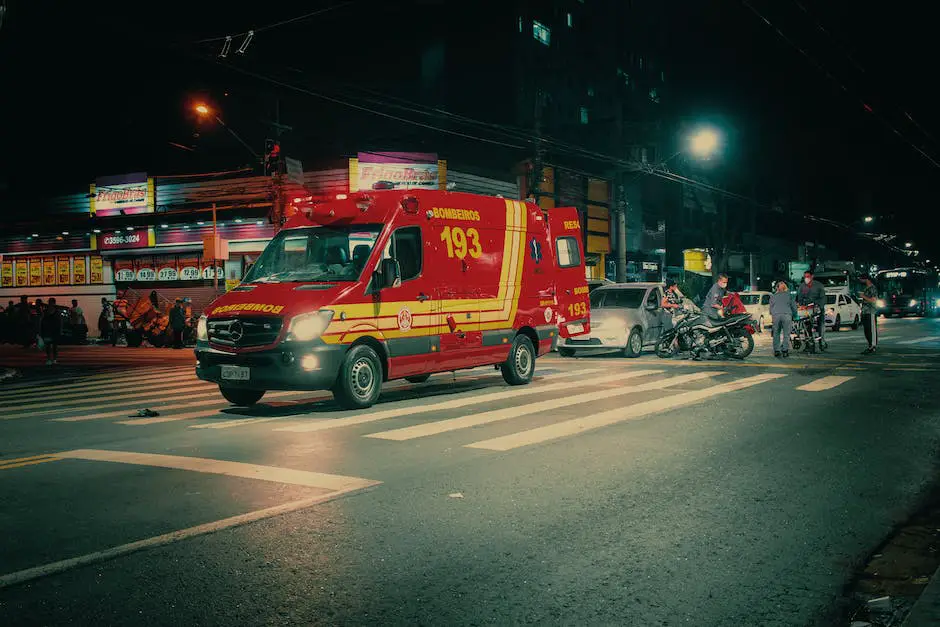
Interpreting Crash Test Data
Leveraging Crash Test Data for Smarter Vehicle Purchases
So you’re on the hunt for a new ride, but not just any metal on wheels will do — you’re looking for a vault on tires, the kind of car that laughs in the face of danger and comes out with just a scratch. Well, gear up, because crash test data is the map to that treasure, my friend. It’s the hard-hitting, crunch-testing, dummy-flinging numbers game that separates the tough shells from the tin cans.
When safety is a top priority, which let’s face it, should be always, a deep dive into crash test reports is a must. Understanding the aftermath of a simulated accident provides insights into potential real-world scenarios. We’re talking about digging deeper into data sheets and reading between the lines of test scores — it’s about envisioning how these cars stand up to the forces of chaos.
For starters, compare the nitty-gritty details of crash outcomes between different models and manufacturers. Look at the specific impact forces, cabin intrusion measurements, and dummy injury readings. This isn’t light bedtime reading; this is the meat and potatoes of the safety world, where vehicles show their true mettle.
Don’t just stop there. While it’s tempting to rely solely on the star ratings provided by safety agencies, there’s more to safety than a cluster of shiny graphics. Pay attention to the supplemental notes and evaluations offered, which often paint a more comprehensive picture of a vehicle’s performance in particular scenarios. Behind each star and accolade are the minutiae that could mean the difference between a bruised knee and a trip to the hospital.
Material resilience is key — cars built with advanced high-strength steel, aluminum, and other sturdy materials can drastically affect the vehicle’s ability to absorb and redistribute impact energy. Furthermore, take note of crumple zones, those engineered areas designed to absorb impact forces, protecting the occupants inside.
Think about future-crash-prevention technologies too — features like Lane Keep Assist and Blind Spot Warning don’t just make life simpler; they actively work to keep you out of trouble. And when it comes to children, delve into the LATCH evaluations, as securing a child seat correctly is as necessary as picking the freshest avocado at the grocery store — vital.
For those who like a good visual, scour video libraries of crash tests when available. They’re compelling, sometimes sobering, and illustrate beyond still images and numerical ratings the potential real-time experience during an accident. It’s one thing to read about safety, quite another to see it action.
Remember, as vehicles evolve, so too does the tech within them — adaptive headlights, pedestrian detection systems, and other wizardry are coming out faster than new seasons of your favorite streaming series. These innovations shake up safety standings year after year, so pour over the latest data, not just the dusty tomes from five years back.
Wrapping this up, before capping off that purchase with a fresh signature, take note of what’s been learned. While technology and safety features act as a shield, they work best when paired with careful, conscientious driving. Don’t let the quest for safety end at the dealership — it continues every time the engine roars to life.
Remember, good people: in the wildly exhilarating world of auto safety, knowledge isn’t just power — it’s protection, it’s peace of mind, it’s ensuring the joyride goes on. Happy and safe motoring!
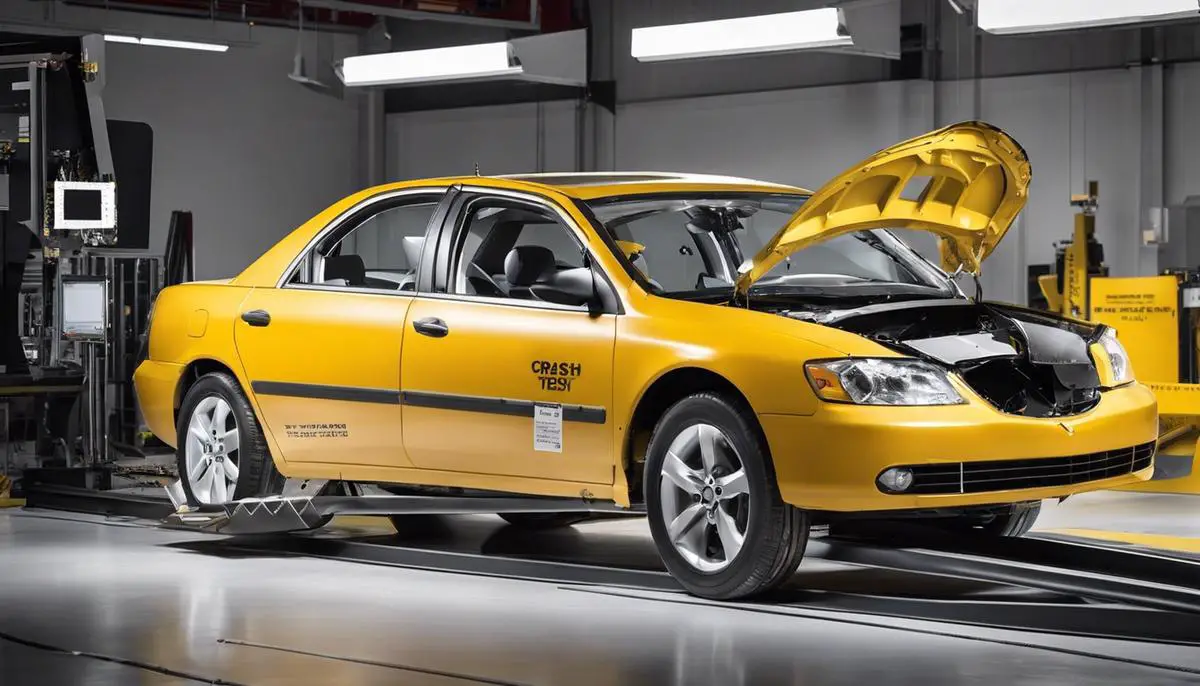
Influence of Regulations and Technology
As the automotive industry continues to hurdle forward, technological advancements and government regulations work hand in hand to push the envelope of vehicle safety. Every year, new vehicles roll out with updated features designed to keep passengers secure and to meet the ever-stringent standards set by authoritative bodies. Let’s delve into how these factors shape up the crash test standards that ultimately determine a vehicle’s safety profile.
The synergy between government regulations and tech advancements cannot be understated. While regulations determine the baseline of what safety features must be included, technology often exceeds these requirements, redefining what is possible. Adaptive features such as lane-keeping assist and pedestrian detection systems have been born out of a proactive approach to safety, shaped by the anticipation of future regulatory expectations.
One of the key elements in this relentless pursuit is the continuous upgrading of crash test standards. As vehicles become smarter, so do the tests that assess their safety. Advanced driver-assistance systems (ADAS), once optional, are now becoming standard equipment on many models. Crash test protocols are keeping pace, integrating scenarios where these technologies are tested for effectiveness. The testing criteria evolve, further refining the measures of protection these systems provide.
With the rise of electric vehicles, new questions regarding safety are also being addressed. Battery integrity during and after a collision, for instance, has become a focal area as these power sources can pose unique risks. Accordingly, crash test standards are evolving to include electric vehicle-specific parameters ensuring that advancements in sustainability do not compromise safety.
Cybersecurity is another dimension of vehicle safety that’s gaining attention. With cars becoming more connected, they are vulnerable to cyber threats, which could undermine their operational safety. In response, discussions around cybersecurity measures are beginning to influence vehicle design and, consequently, their evaluation in crash tests.
Emerging technologies such as vehicle-to-vehicle communication (V2V) and automated driving systems (ADS) are on the horizon. While not yet fully integrated into mainstream vehicles, their eventual inclusion will invariably lead to a paradigm shift in crash testing. Standards must pivot accordingly to ensure that the autonomous features not only perform as intended in a controlled environment but also hold up under the more chaotic conditions of real-world driving.
Understanding vehicle-to-infrastructure implications is also pivotal as smart cities and smart vehicles herald a new age of interaction, potentially influencing how vehicles respond to imminent collisions. This introduces another dimension to safety tests – ensuring a harmonious interplay between vehicles and the built environment.
Lastly, the global harmonization of vehicle safety standards is another aspect of interest. While vehicles are designed to meet the specific regulations of the markets they are sold in, there’s a move toward universal standards that could streamline manufacturing while maintaining high safety levels.
In essence, the dynamic between regulations and technological innovation is shaping crash test standards to be more comprehensive than ever. Manufacturers and safety agencies alike aim to stay ahead of the curve, ensuring that each new leap in technology is met with appropriate measures to evaluate its impact on safety. For car enthusiasts, staying abreast of these developments means a savvy approach to vehicle selection, capping off the well-rounded understanding of what makes a car truly safe.
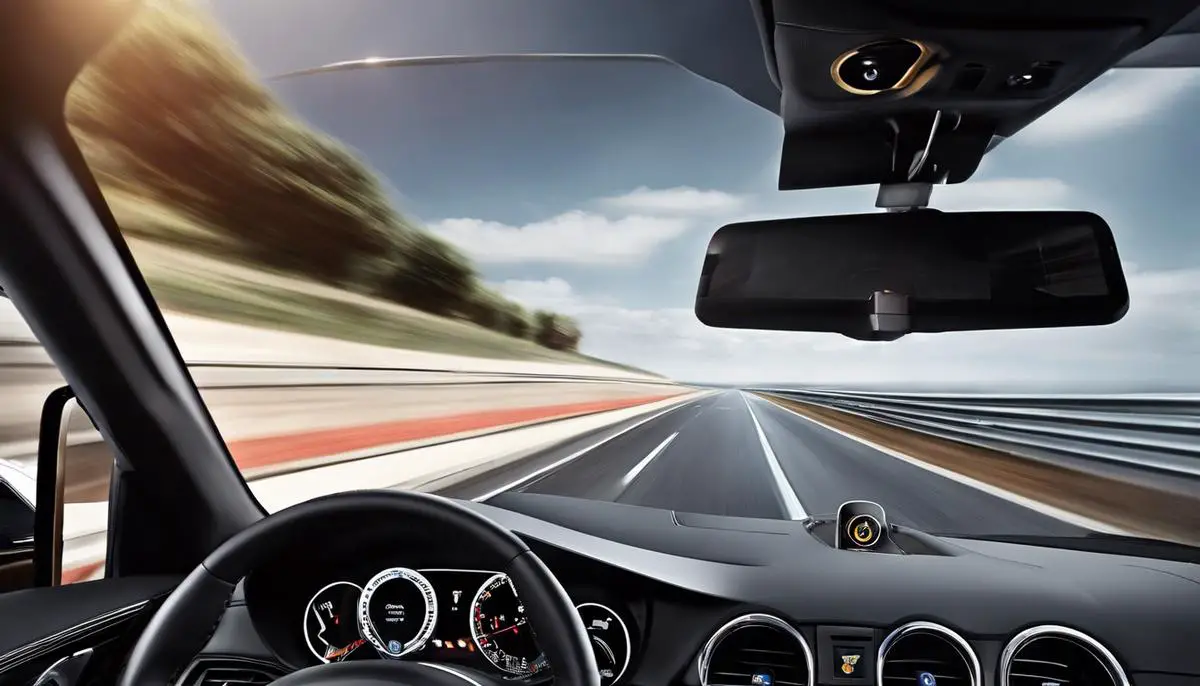
Having navigated through the intricacies of crash test ratings, it is evident that these evaluations are far more than mere numbers or stars—they are indicative of a vehicle’s commitment to occupant protection in the most dire of circumstances. As we witness advancements in technology and heightened safety regulations shaping the future of automotive design, it’s clear that the quest for safer vehicles is in perpetual motion. Understanding the results of these rigorous crash tests empowers individuals to prioritize safety and choose vehicles that not only meet but exceed the demands of the road, fostering a safer journey for all.
